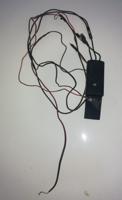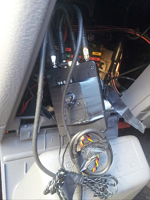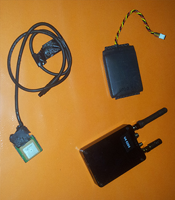A camera was found in a car parked near the venue of an event. It was located in a box, behind a tinted panel. It had a good view on the venue's entrance. A flashlight pointed at the box revealed the camera, despite the tinted panel.
A tracking device was found under a car. The battery-powered device was attached with strong magnets under the car body, in the rear, just past the bumper.
A camera was found in a minibus parked near the venue of an event. It was located in the back of the vehicle, on a shelf, in a plastic box, one side of which had been replaced by tinted glass. The minibus was disguised as a craftsman's vehicle, with work equipment clearly visible, tools and empty coffee cups on the passenger seat.

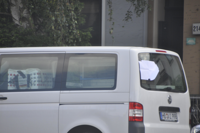
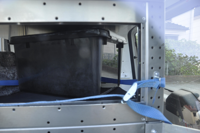
Two cameras were found in a car parked on a street. They were located on the package shelf, in a basket and a bag respectively. A set of cables, hidden under towels, led to the trunk of the vehicle. The camera lenses were aimed at a building entrance and a sidewalk.

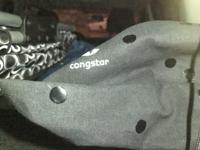


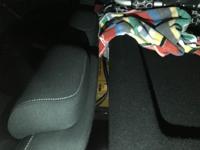
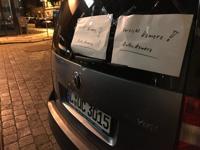

A tracking device was found under the car of someone who had been arrested two days earlier on an outstanding warrant. It was attached under the rear axle of the car with strong magnets. The device included a battery, a cellular antenna and a SIM card.
A microphone was found in a car. It was hidden inside the vehicle. The night before the device was found, one of the car's windows was broken, a few things inside it were stolen, and four men were seen tampering with the vehicle — the theft was presumably a cover-up for the device installation.
A GPS tracker and a microphone were found in a car. The device was attached with strong magnets. It contained a SIM card.

An AirTag — a tracking device marketed by Apple — was found taped under a bike. It had a diameter of about 3.5 centimeters.
An AirTag — a tracking device marketed by Apple — was found on a scooter. It was hidden inside the scooter seat cushion, in which it had been inserted through a slit apparently made with some sort of blade. It had an approximate diameter of 3 centimeters and a height of less than 1 centimeter.
Two GPS trackers were found under a vehicle — the second one was found a few days after the first one was found and removed. They were attached with strong magnets in a hollow space between the bumper's plastic covering and the vehicle body, precisely behind the left rear wheel. Each tracker consisted of two metal cases connected by a cable. The first one contained a battery pack and the second one the tracker itself, including a smaller battery, two antennas, and a SIM card.
The pictures of the device show it included a tracker of model “NavKos T” marketed by the German company DESAG Telematic. This suggests that the device was supplied by the German company DESAG Telematic.
A GPS tracker and an audio recording device were found in a car. They were located behind a panel of the front ceiling light. They were connected by a power cable and drew their power from the supply line to the rear ceiling light. The GPS tracker contained, among other things, a GPS receiver “u-blox MAX-M8”, a card slot with a 16 GB microSD card, a cellular chip “u-blox LISA-U230” along with a SIM card, as well as a removable three-pin antenna module. The audio recording device contained a voltage converter, a 3.7 V, 550 mAh lithium-ion battery, and a small circuit board which included a 32 GB microSD card and the “NN01-104” antenna from the company Ignion (formerly “Fractus”). The audio recording device tapped into the microphone of the hands-free system, which was located behind a cover above the rearview mirror.
A tracking device and two microphones were found in a car. The tracking device was connected to the power supply of the control unit underneath the steering wheel on the left side. It was attached with a magnet, tape, and insulating fabric. The microphones were located at the end of a long cable running from the inside of the internal side pillar linings of the windscreen to the underside of the roof of the car. The tracking device used the GLONASS positioning system, and consisted of an antenna connected to a multi-frequency receiver box containing a micro SIM card.
A GPS tracker was found under a car. It was located in the lower right body frame. According to the authorities, the tracker had been installed in May 2020.
A GPS tracker and a microphone were found in a car. The two devices were installed separately, each in one of the front seat headrests. The headrests were opened and glued back together after the devices were installed. Each device was equipped with two batteries. The first device, which was apparently the control unit, was equipped with a GSM module to send GPS data and recorded audio files via the mobile phone network. On the control unit were a GPS/GSM antenna, the connection to the batteries and a microphone. Inside the device, a SIM card was found. The second device seemed to be the actual audio monitoring device. It also had a battery connection, a smaller antenna and two microphones, which had been glued into the holes for the seat support, with anti-vibration padding. This device was equipped with an SD card, but there were no more audio files stored in it. The SD card was apparently used as a storage medium for the operating system data and for temporary storage of the recorded data. According to what was known at the time of discovery, the GPS tracker was installed in August 2019 and the listening device in or after September 2019. The devices were presumably installed by the BKA (Bundeskriminalamt, Federal Criminal Police Office).
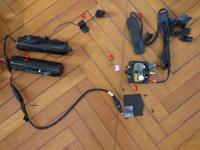
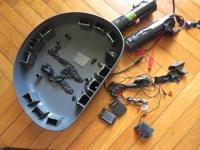
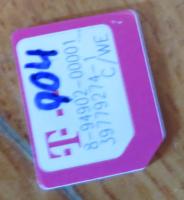


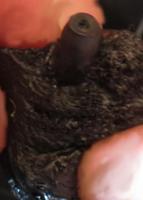

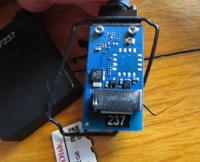
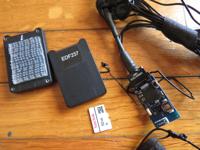
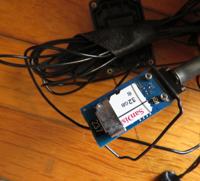
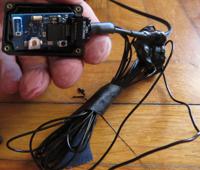
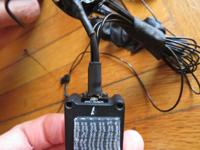
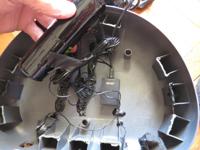
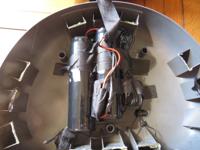
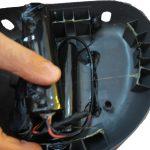
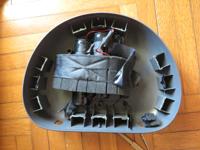
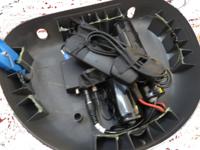
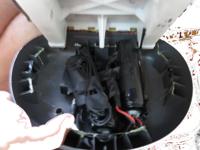
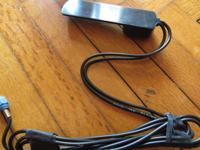
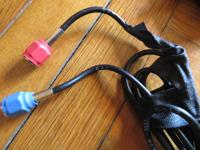
A GPS tracker was found on a motorbike. It was attached with a strong magnet. It was equipped with a SIM card and a battery.
A GPS tracker was found on a car. It was attached with a strong magnet. It was equipped with a SIM card and a battery.
A microphone and two GPS trackers were found in a vehicle. A first tracker was attached with a magnet to the rear bumper, on the right side. The other tracker, along with the microphone, was located in the air vents located between the windscreen flap and the windscreen. The first tracker included a SIM card and an accumulator made of five 3.6 V lithium batteries connected in a series. The other tracker was equipped with a SIM card.
A GPS tracker and a listening device were found in the car of an Irish republican. They were hidden in the undercarriage of the car. Shortly after the discovery of the device, the car owner's home was raided by the Special Detective Unit (SDU), and the car was seized.
A microphone was found in a car. It was located in the upholstery of the vehicle roof. The device wires were hidden in the isolation case. The device was connected to the car electrical system, so that it turned on when the car started. It included a SIM card.
Two microphones and a GPS tracker were found in a car. The microphones were located above the driver's head, next to the junction of the car roof upholstery and the windscreen. The GPS tracker was located in the fuse box. Everything was powered by a connection to the headlights cable. The headlights were dysfunctional, seemingly because of the power supply required by the devices.
Two microphones and a GPS tracker were found in a car. The microphones were located inside the upholstery of the car roof, just above the driver's head. The GPS tracker was attached to the car body with a magnet. The devices were connected to the car power supply at the level of the pedals, just below the lever that opens the front trunk.
Two microphones and a GPS tracker were found in a car. The device was attached to the car body with magnets and connected to a cable carrying power to one of the lights inside the car. The microphones were attached with gum over the driver's and passenger's head seats. There was also a battery. The power cable, battery, microphones and GPS were all connected to a transmitter. There was a SIM card inside the transmitter.
Two microphones and a GPS tracker were found in a car. There was also a device equipped with an antenna, a SIM card and a 16 GB memory card. The microphones were located under the upholstery of the car roof and the wires reached the power supply through the car door. The power cable was connected to the fuse box and to other wires located under the dashboard. The magnetized GPS and a thing with an antenna and cards were hidden behind the speedometer. Everything had been seemingly installed in the car more than a year before the discovery and the microphones were recording even when the car engine was turned off, in a radius of several meters.

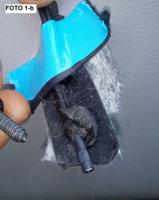
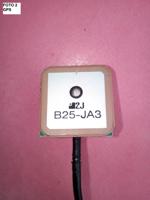
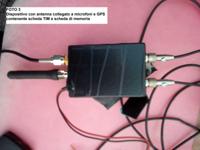
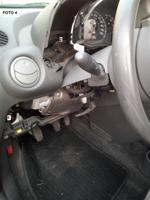
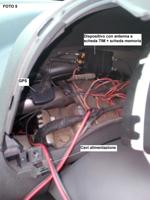

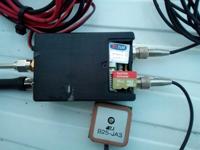
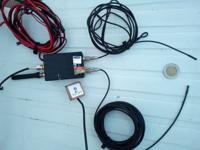
A GPS tracker was found in a car. It was located in the rear bumper, attached to the car body with magnets. It consisted in removable batteries and a SIM card.
Microphones and a GPS tracker were found in a car. They were located in the fuse box. The car had been having electrical problems (the battery had discharged twice in a month, sign of an abnormal electricity consumption), presumably because of the devices.
Microphones and GPS trackers were found in two cars.
Microphones and GPS trackers were found in a car. The microphones were located under the upholstery of the car roof, where the windscreen and the sun shields are. In one case the power cables reached beneath the wheel, in the other they were attached to the car lights.
A geolocation device was found on a car. It was magnetically mounted inside a wheel well of the car. It included a battery, a GPS antenna, a GSM antenna, and a SIM card. Its components were wrapped in black tape and magnetically mounted to the car mudguard and frame. It was probably installed by the Cuerpo Nacional de Policía (Spain national civilian police force).
A listening device and a tracking device were found on the car of an Irish republican. The listening device was attached to a rear wheel arch of the car by several powerful magnets. The tracking device was located under the opposite wheel arch. The listening device was powered by 12 long-life batteries. The tracking device also appeared to be battery-powered.
A GPS tracker and a listening device were found on the car of an Irish republican. Parts of the device — battery packs and a transmitter — were hidden behind the car rear bumper.
A tracking device was found on a truck. It was attached with a magnet to the frame of the truck.
A tracking device was found on the van of an Irish republican. It was hidden beneath a wheel arch of the vehicle. It was encased in black rubber. It contained a long-life battery pack and was marked with a serial number linked to the British military. Shortly after the discovery of the device, the van owner's home was raided by police in an apparent attempt to retrieve the device.
Two bluetooth listening devices and a tracking device were found in the car of an Irish republican. The devices were hidden on the underside of the driver's seat, underneath carpet in the rear passenger footwell, and behind the rear seats.
A GPS tracker was found under a car. It was attached with magnets under the right rear bumper. Its model was “GPRSpack”. It contained batteries, a GPS receiver and a GSM module.
The “GPRSpack” device was developped as a collaboration between the BLKA (Bavarian Landeskriminalamt, State Criminal Police Office of Bavaria) and the German company EBS Electronic. In 2017, EBS Electronic, together with another company, became the German company EBS-SYSTART.
- GPRSpack.pdf: usage guide of the "GPRSpack" device (in German).
A GPS tracker was found under a car. It was attached with magnets inside the rear bumper of the vehicle. It contained batteries, a GPS receiver and a GSM module. According to the article that reported the discovery, the device model was “GPRSpack”.
The “GPRSpack” device was developed as a collaboration between the BLKA (Bavarian Landeskriminalamt, State Criminal Police Office of Bavaria) and the German company EBS Electronic. In 2017, EBS Electronic, together with another company, became the German company EBS-SYSTART.
- GPRSpack.pdf: usage guide of the "GPRSpack" device (in German).






A tracking device was found under a car. It was hidden in the wheel well of the car. It was installed by cops from the Staatsschutz (“State security”). The owner of the car caught the cops while they were tampering with her car in the garage of her workplace.
Two microphones and a GPS tracker were found in a car. They were located in the car ceiling. The device included SIM cards, a transformer, and antennas with a printed circuit board. The microphones were pointed towards the front seats.
A listening and geolocation device was found on a scooter. It was located in the spare wheel bracket, next to the tank and behind the horn grid. It was based on a device sold by Telit (an Italian supplier of wireless technologies). The device model was “Telit GM862-GPS”. It was capable of listening with a microphone, geolocating with a GPS antenna, and transmitting the collected information on the mobile phone network with a GSM antenna. The device was located in the spot where the tank is along with a transformer and an accumulator. Both antennas (GPS and GSM) were connected to the device and ended up in the spare wheel bracket. The microphone, also connected to the device, ended up behind the horn grid. Wires connected the device to the scooter starting system. All these components were attached to the scooter frame by strong magnets secured by tape. This scooter model doesn't have a battery (it dates back to the 1980s) and its engine generates alternating current, hence the presence of a transformer and an accumulator to power the device even when the scooter was not moving.
- Telit-GM862.pdf: product description of the Telit GM862-GPS device (in English).
A GPS tracker was found under the car of an Irish republican. It was located inside the car's rear bumper and attached to the vehicle with magnets. Shortly after the device was discovered the car was seized by the police, and returned to the owner after a number of hours.
A GPS tracker was found under a car. It was located in the car bumper. It included a GPS antenna.
A geolocation device was found in a car. It was located behind the car battery ventilation grids. It consisted in a small black case of 9 by 5 centimeters, connected with wires to the car electrical system. Inside a case were two printed circuit boards, a passive antenna, a geolocation device branded “Navman” and a SIM card.
A GPS tracker was found under a truck. It was attached with a magnet under the back of the vehicle. It consisted in SIM cards connected to 4 “torch” batteries in a series.
A GPS tracker and a microphone were found in a car. The device was located between the car body and the interior coating, attached with two magnets. It was connected to the car power supply by the car interior light wires. It consisted in a modified mobile phone, an antenna, a GPS and a microphone.
A GPS tracker was found under a car. It was attached to the car with magnets. It used a mobile phone connection to report the car position. According to the articles that reported the discovery of the tracker, the information it collected was sent to Thompson and Clark, a New Zealand private investigation agency. The surveillance was probably carried out on behalf of a company.
According to the articles that reported the discovery of the tracker, it was supplied to the private investigation agency Thompson and Clark by the New Zealand company Argus Tracking. As shown by the high resolution pictures of the device, its model was “GT-2000XT-D”, and it was very similar to the device “GT-2000”, marketed by the company based in United Kingdom Custodia Systems.
- GT2000.pdf: product description of the GT-2000 device (in English).
- levin-2010-04.zip: very high resolution pictures of the device.
A GPS tracker and microphones were found in a car. The device was located in a plastic container (badly) sticked under the roof. It contained two boxes, both of which included a SIM card. From there wires went out, through a hole, up to under the back seats. There were two microphones along the seat belt canal: the first at the driver's height, the second at the height of the levers used to adjust the seat, next to the back seats. The antenna was behind the back seat. Finally, still coming from these two boxes, a wire went through the car doors to reach the car fuse box.
A GPS tracker and a listening device were found under the car of someone linked to Irish republicans. Parts of the devices were located under the car bumper. The listening device used a microphone to transmit conversations within the vehicle over the mobile phone network.
A GPS tracker was found under the car of Marius Mason. It was attached to the car with magnets.
A tracking device was found under the car of a left-wing nationalist activist.
Microphones were found in a car. The device was located in the car ceiling. It was connected to the car interior light power supply. It consisted in a modified mobile phone, an antenna and two microphones.
A GPS tracker was found in a car. It was attached with strong magnets in the front wheel well on the passenger's side. It contained a set of high-power batteries, a GPS antenna, a module for data processing and a mobile radio transmitting module with a transmitting antenna. The whole thing was wrapped with black tape. The device was presumably installed by the BKA (Bundeskriminalamt, Federal Criminal Police Office).
A GPS tracker was found under a car. It was attached with magnets under the rear bumper. It was equipped with a battery. When it was discovered, it was flashing a green light at short intervals.
A surveillance device was found in the roof of a car. It was equipped with a microphone. It seemed that the device was causing interference that could be heard on the car radio.
A GPS tracker was found under a car. It was located under the car rear bumper. It included a battery pack, a GPS antenna, a transmitter-receiver module and powerful magnets. It was installed by the FBI (Federal Bureau of Investigation).



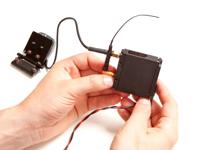
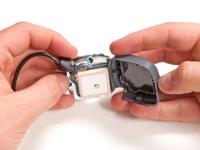

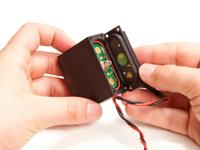








A surveillance device was found in a car. It was located in the roof of the vehicle. It was equipped with one (or two) microphone(s). It was powered by sunlight. It seemed that the device was causing interference that could be heard on the car radio.
GPS trackers were found under three cars. They were attached by powerful magnets behind the rear bumpers on the driver's side. Each one contained a battery pack made of four lithium D cell batteries, a GPS antenna, a cellular antenna and a main component box. The component box contained a GPS receiver, a computer chip and a cellular modem. All the components were wired together. The trackers were probably installed by the FBI (Federal Bureau of Investigation).
A listening and tracking surveillance device was found in a car used by Irish republicans. It was built into the car body in such a way as to make it impossible for anyone carrying out repairs on the vehicle to find it. It was able to track the location of the vehicle, record and transmit audio, and could be switched on and off remotely. It included a microphone built into the middle of the roof of the vehicle, as well as rechargeable batteries wired to the car that could recharge only when the car was running.
A tracking device was found under the car of a person under investigation for burglaries. It was attached with two magnets. It was a small box with an antenna.





















